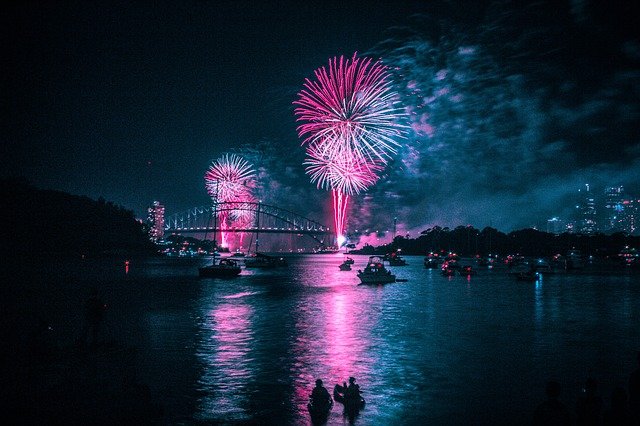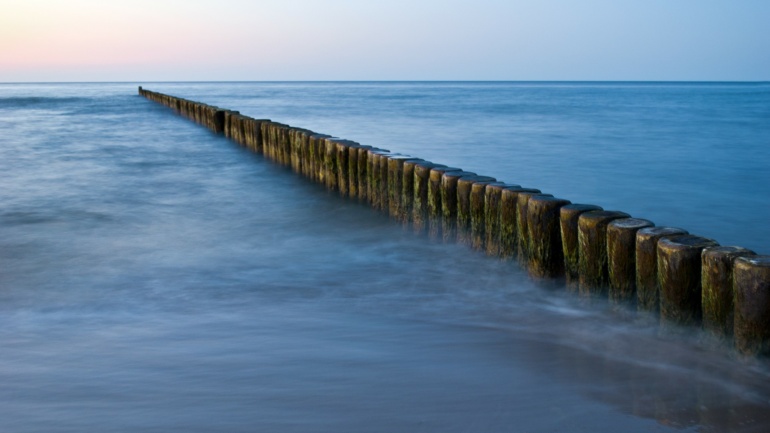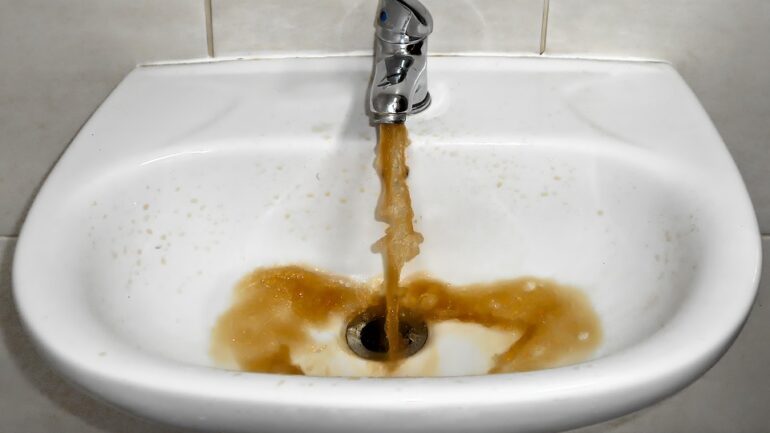By Suraj Rajendran, Staff Writer for Save The Water™ | June 27, 2016
Fireworks are true works of art. People usually enjoy fireworks because they invoke joy and a sense of excitement as the fireworks go off in the dark sky. Unfortunately, this enjoyment takes a toll on the environment; our beloved fireworks are polluters in more than one way. We’ve known that they pollute the air to a rather high degree over the years.5 Now, fireworks seem to be creating another problem: water contamination.
It might seem questionable to claim that fireworks create water contamination, but studies have confirmed otherwise. A recent research analysis published by the United States Geological Survey (USGS) found that fireworks are the likely cause of elevated perchlorate levels in water sources near Mount Rushmore. From 1998-2009, fireworks were set off in close proximity to Mount Rushmore as a part of the location’s annual Fourth of July celebration.2 On the one hand, while the fireworks display delighted the many visitors, this activity also spewed perchlorate. This chemical eventually seeped into the park’s groundwater, contaminating the park’s primary source of drinking water.
With the help of the National Park Service, over the last 4 years, the USGS was able to conduct over 100 water tests around Mount Rushmore. The highest levels of perchlorate were in the West Fork Lafferty Basin. “The lack of alternative perchlorate sources in the area, such as a military site or agricultural land with applied fertilizer, and the presence of firework debris suggest that past fireworks are the perchlorate source,” states hydrologist Galen Hoogestraat, leaving little doubt that fireworks weren’t the suspects of this case.3
A fireworks-based chemical in drinking water
Perchlorate is a chemical utilized as a part of the assembling of explosives and rocket propellants for the aerospace, defense, and many other industries. Low levels of ammonium perchlorate collect naturally in the environment. In 1997, perchlorate was deemed to be a drinking water contaminant for the Western United States. The trigger was pulled when dangerously high levels of perchlorate were found in California drinking water supplies. More recent studies have shown perchlorate contamination in both groundwater and surface waters serving as drinking water sources for more than 16 million individuals in at least 26 states across the country, the case of Mount Rushmore being one of them.
Perchlorate is categorized as a goitrogen by the United States Environmental Protection Agency (EPA), since at abnormal levels, it can meddle with the thyroid’s capacity to uptake iodide and in this way influence hormone generation.4 Thyroid hormones play a key role in the development and furtherance of the central nervous system of fetuses and newborn children. As indicated by the National Research Council, pregnant women, babies, kids, and individuals with iodine-inadequate weight control plans or prior thyroid problems might be more vulnerable to perchlorate than the general public.1
Potential federal action
In 2011, the EPA announced a determination to regulate perchlorate in drinking water. This determination went against a preliminary regulatory decision in 2008 that the creation of a regulation for perchlorate did not present a significant decrease in hazard levels for individuals served by public water systems. The EPA set an interim limit of 15 micrograms per liter as the amount of perchlorate in water that someone could drink “that is not expected to cause any adverse noncarcinogenic effects for a lifetime of exposure.” The new resolution also accounts for the potential Health Reference Levels (HRLs) for various life stages (infants, children, adults, etc.) In addition to regulating the potential health risks from exposure to perchlorate, the methods for establishing a Maximum Contaminant Level (MCL) for perchlorate is also considering the number of people conceivably affected by perchlorate contamination, the levels of perchlorate in drinking water sources, and the cost of removing said contaminant from those sources. As of 2011, the EPA claimed that they would be proposing an MCL for perchlorate by 2013, but this process has been postponed. It is not known when the MCL will be proposed if it ever is.4
Water treatment options
Perchlorate can be eliminated through a myriad of cutting edge treatment systems. Each method has its pros and cons based on the amount of perchlorate present in the water source. Other variables that may make one method seem more suitable are the objectives of perchlorate removal, contending treatment goals, and treatment waste disposal choices, and other water quality parameters. Reverse osmosis, fixed and fluidized bed biological treatment, and single-pass ion exchange are all methods that have a high potential of removing the target perchlorate.
The regenerable ion-exchange treatment produces concentrated perchlorate waste brine that requires proper control and care, especially when it comes to disposal. Reverse osmosis is pretty much ion exchange’s expensive brother–they both delve on the idea of creating a concentrated brine. Biological treatment for removing perchlorate from drinking water is restricted in the US because of public doubt. It is also limited on the grounds that the perchlorate-free water must be further treated to meet Surface Water Treatment Rule controls. Besides these facts, it is definitely a cost-effective alternative that has numerous advantages. Since single-pass particle trade has convincingly proven itself, is basic, and is generally cost-efficient, it is the most widely recognized treatment strategy for perchlorate contamination today.1
The levels of perchlorate found in a portion of the USGS tests of the Mount Rushmore water were over the EPA’s perchlorate level limit, with one example measuring 54 micrograms per liter. However, as per a USGS official statement, “the drinking water at Mount Rushmore meets current regulations and is safe for public consumption.” Right now, the park does not intend on changing the source of its drinking water, and individuals examining this study say that it is still safe for most guests and staff to drink the water. All that said, they also suggest that those with any concerns about their health should immediately check in with a doctor.3
References
- Asha Srinivasan and Thiruvenkatachari Viraraghavan. April 14, 2009. “Perchlorate: Health Effects and Technologies for Its Removal from Water Resources.” International Journal of Environmental Research and Public Health. https://www.ncbi.nlm.nih.gov/pmc/articles/PMC2681191/
- Allen Heakin. October 2001. “Level One Water Quality Inventory for Mount Rushmore National Memorial, South Dakota.” National Park Service. http://nrdata.nps.gov/programs/water/L1_Inventory_Reports/MORU_L1.pdf
- Daniel, Kelly. May 6, 2016. “At Mount Rushmore, Fireworks Have Affected Water And Soil.” Environmental Monitor. http://www.fondriest.com/news/mount-rushmore-fireworks-affected-water-soi.htm
- Environmental Protection Agency. June 6, 2016. “Perchlorate.” https://www.epa.gov/dwstandardsregulations/perchlorate
- Rachael Rettner. July 1, 2015. “Fourth of July Downer: Fireworks Cause Spike in Air Pollution.” Live Science. http://www.livescience.com/51408-july-4-air-pollution-fireworks.html




